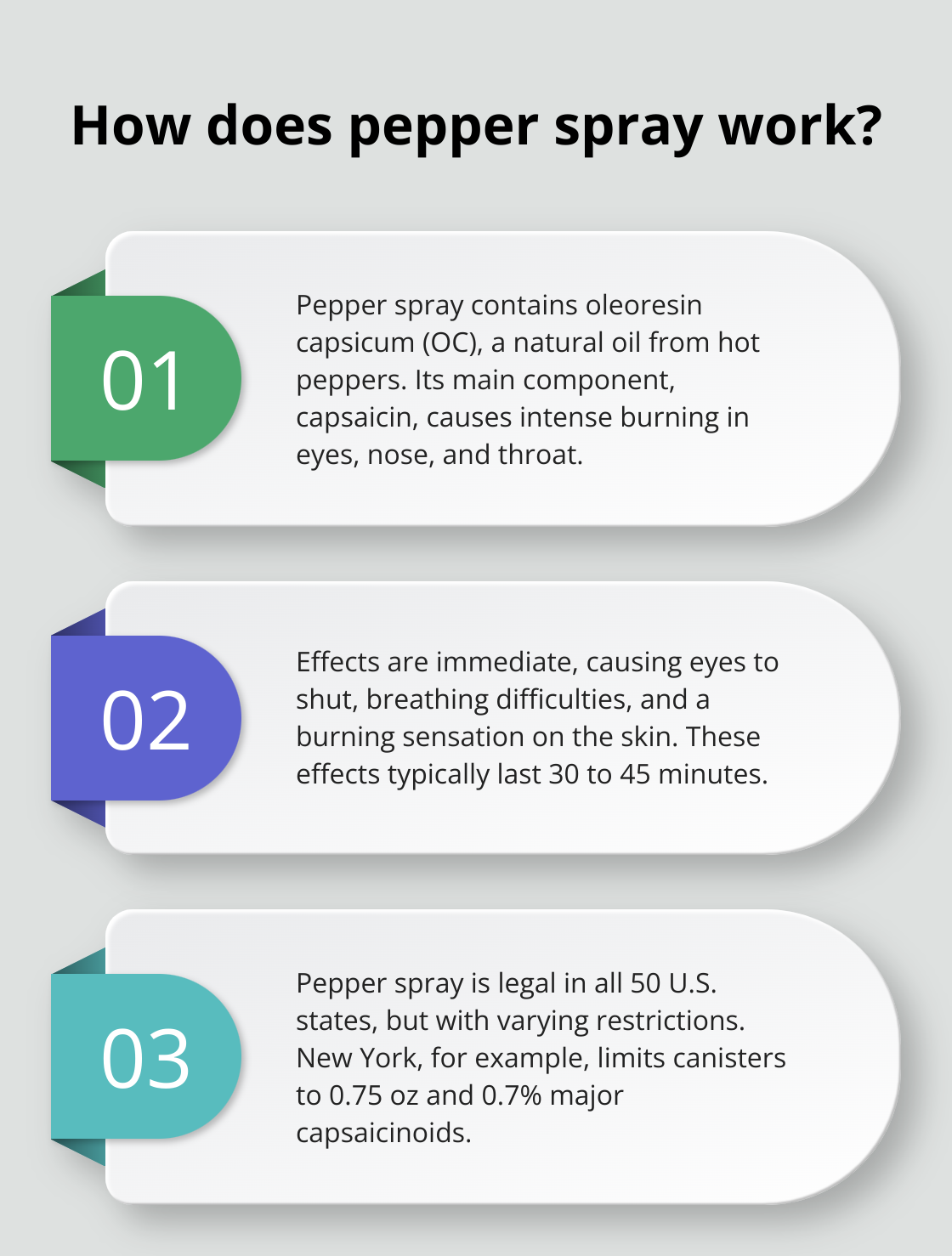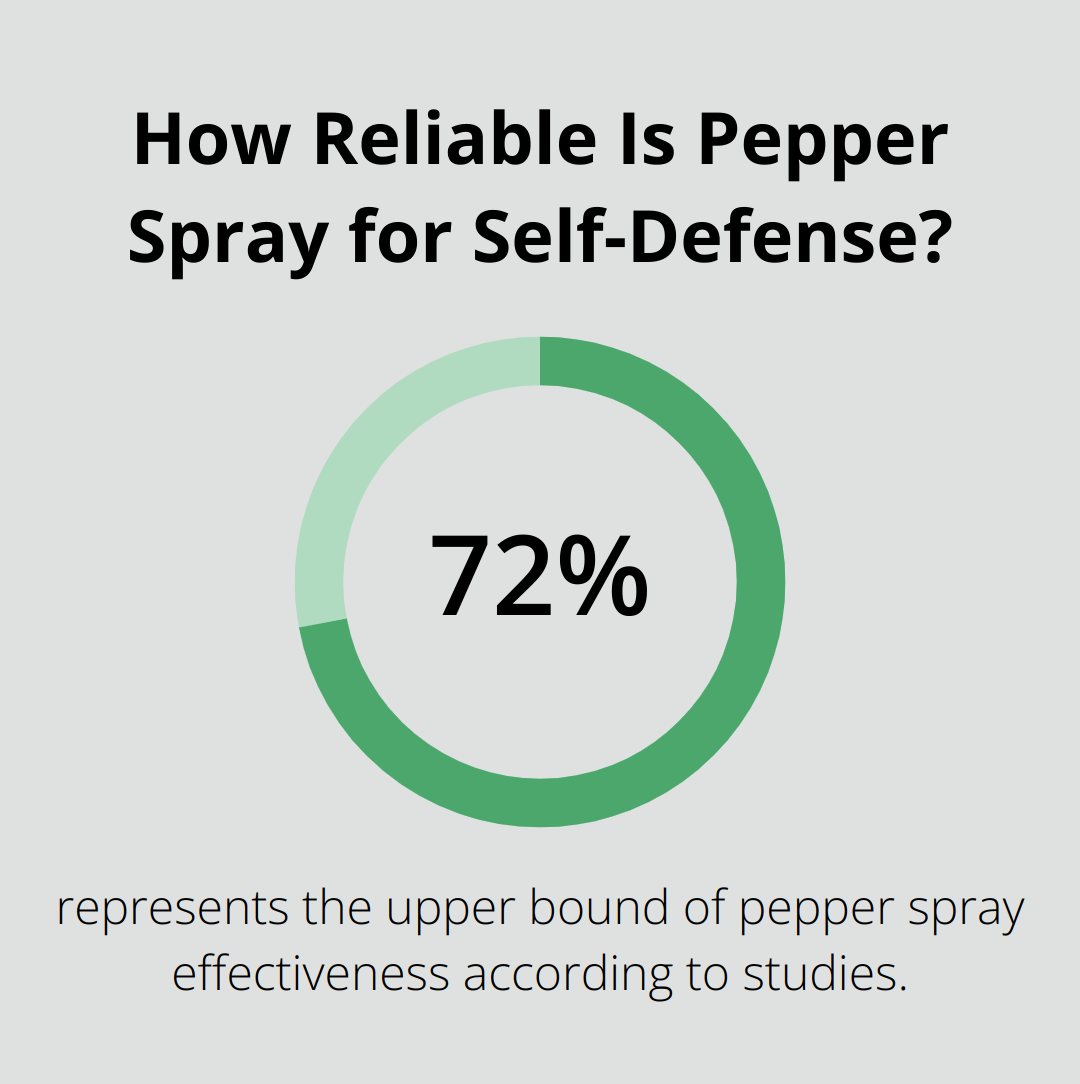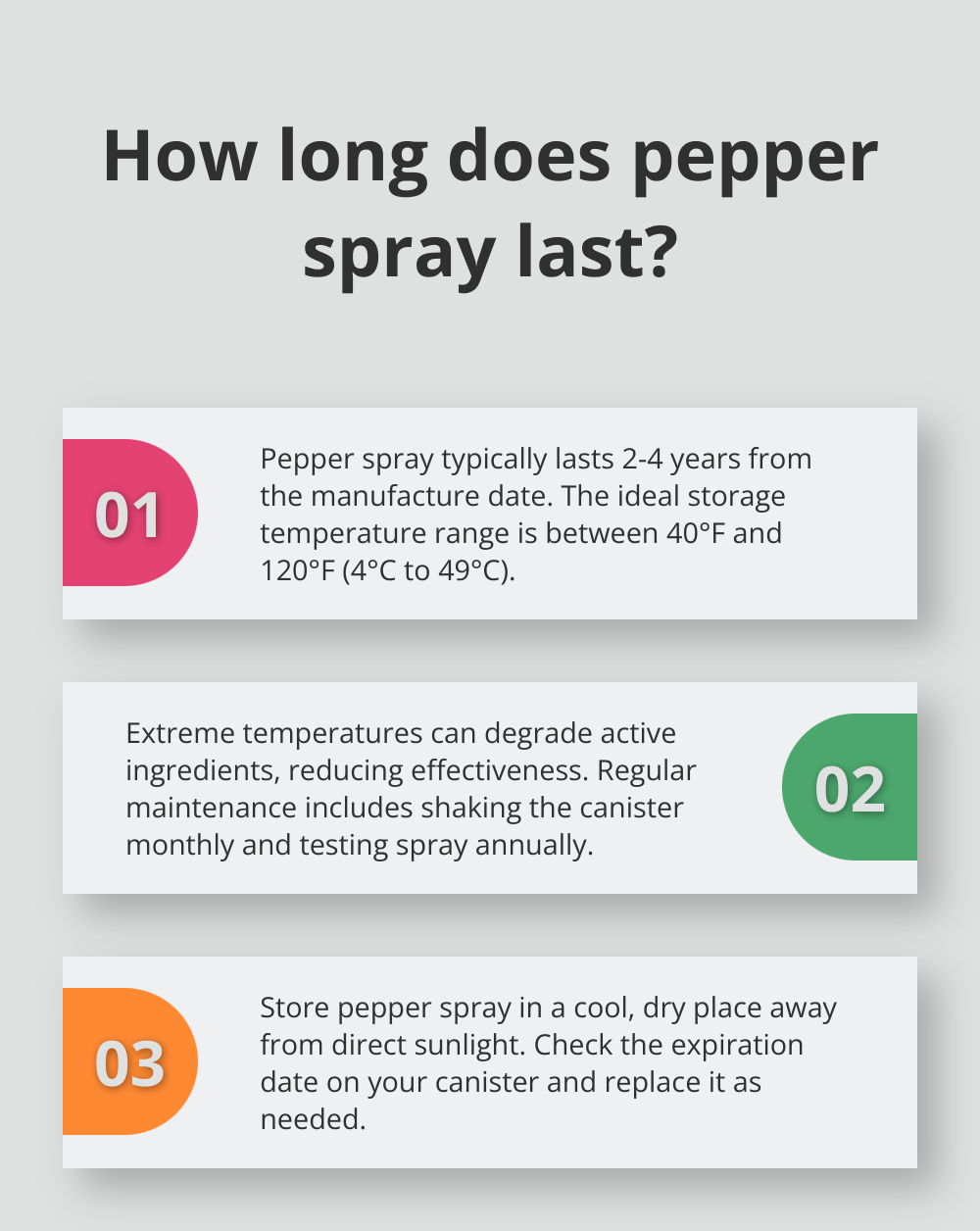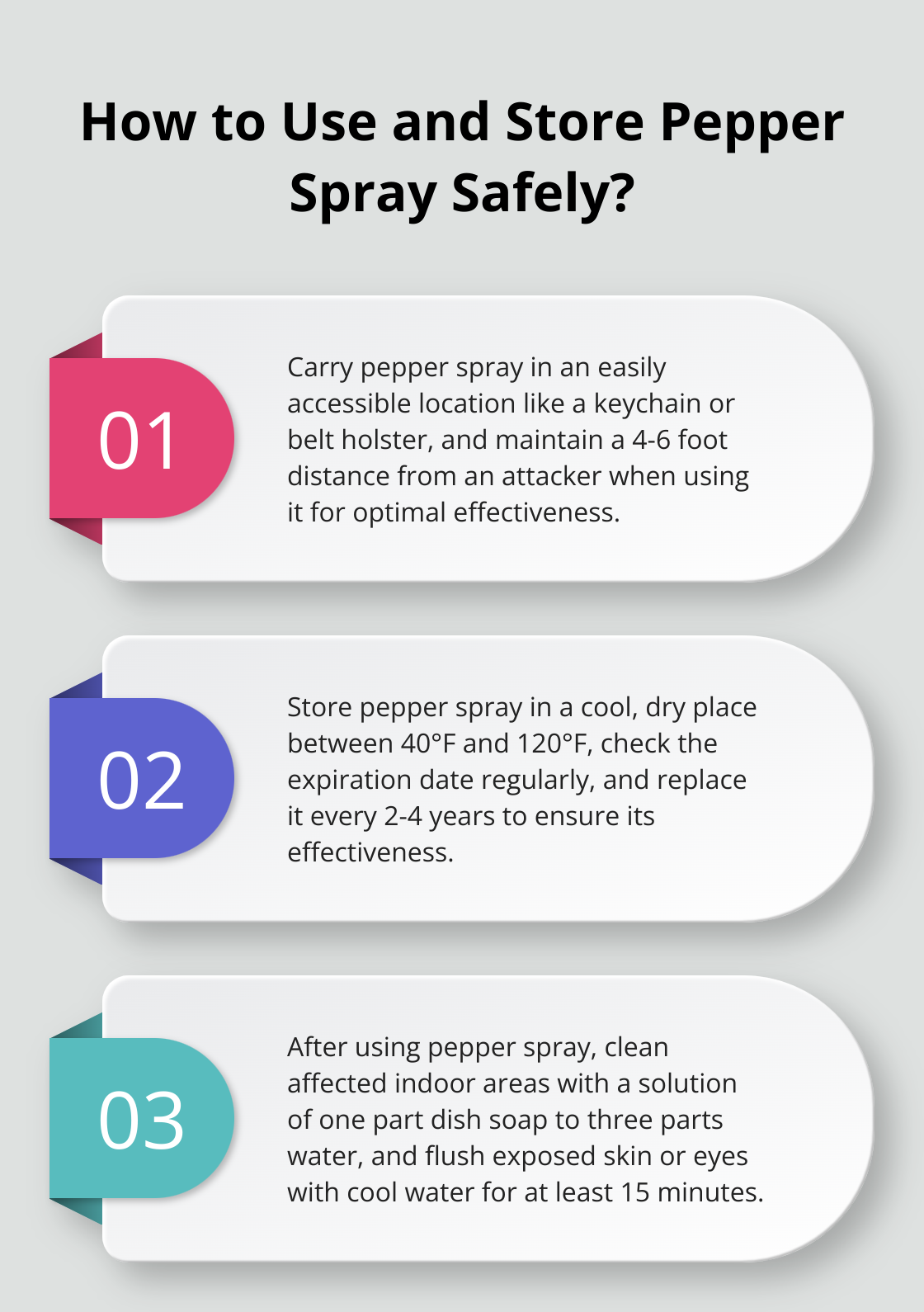Elite Warrior Defense
free shipping on orders over $25
We're having a 15% off sale on all our products. Enter your email below to be notified about future sales.

Pepper spray is a powerful self-defense tool, but it requires proper handling and testing to be effective. At Elite Warrior Defense LLC, we understand the importance of being prepared in emergency situations.
This guide will walk you through the process of safely testing your pepper spray, ensuring you’re ready when it matters most. We’ll cover everything from understanding the components to step-by-step testing procedures, helping you stay safe and confident in your self-defense capabilities.
Pepper spray contains oleoresin capsicum (OC), an oil extracted from hot peppers. The concentration of OC in pepper sprays typically ranges from 2% to 10%. Higher concentrations don’t always equate to more effective sprays, as factors like spray pattern and range also significantly impact effectiveness.
Mishandling pepper spray can result in unintended consequences. Direct eye exposure causes intense burning and temporary blindness. Inhalation may lead to coughing, choking, and breathing difficulties. Skin contact produces a burning sensation and possible inflammation.

To reduce these risks:
Pepper spray laws differ by state and even by city. Most areas allow adults to carry pepper spray for self-defense. However, some states limit the size of canisters or the concentration of OC.
Before you test your pepper spray, review local regulations. Some areas prohibit the discharge of pepper spray in public spaces (even for testing purposes). Always conduct tests in a private, outdoor area away from people and animals.
Pepper spray serves as a self-defense tool, not a weapon. Using it offensively or recklessly can result in criminal charges. Familiarize yourself with local laws and use pepper spray responsibly.
When you prepare to test your pepper spray, gather the following safety equipment:
This equipment helps minimize potential exposure and provides quick relief if accidental contact occurs.
As we move forward to discuss the proper testing environment, keep these components and considerations in mind. The next section will guide you through selecting an appropriate location and setting up a safe testing area.
Testing pepper spray requires a careful choice of location. Pick a secluded outdoor area far from populated zones. An empty parking lot or your back yard should work, ensuring you have about 50 feet of clear space. Public parks and residential areas are off-limits to prevent affecting bystanders.
After you identify a suitable location, take steps to secure the area:

These measures help maintain a safe testing environment for you and others.
Check the weather forecast before you schedule your test. Ideal conditions include:
Strong winds can blow the spray back towards you or spread it to unintended areas. Rain can affect the spray’s effectiveness and complicate cleanup.
Proper protective gear is a must when testing pepper spray. Wear:
This equipment minimizes potential exposure and provides quick relief if accidental contact occurs.
Inform local authorities about your plans to prevent misunderstandings if someone reports seeing pepper spray discharged. Have a trusted friend or family member present during the test. They can assist if issues arise and call for help if needed.
Always keep these items on hand:
Familiarize yourself with proper procedures for treating pepper spray exposure before you begin testing.
The next step in our guide will walk you through the actual testing process, ensuring you can evaluate your self-defense tool safely and effectively.
Before you start the actual testing, examine your pepper spray canister thoroughly. Look for any signs of damage (such as dents, cracks, or leaks). Check the expiration date to confirm the spray’s potency. If you notice any issues, replace the canister immediately. Don’t use a compromised product in a real emergency.
Your stance and grip play a key role in effective pepper spray deployment. Stand with your feet shoulder-width apart, knees slightly bent, and your non-dominant foot forward. This provides stability and allows for quick movement if needed.

Hold the canister firmly in your dominant hand, with your thumb on or near the actuator (spray button). Keep your index finger along the side of the canister for added control. Practice this stance and grip until it feels natural and comfortable.
Now, test the spray itself. Point the nozzle downwind and slightly above eye level. Press the actuator firmly and observe the spray pattern. Most pepper sprays have either a stream or cone pattern. Streams offer greater range but require more precise aim, while cone patterns provide wider coverage at shorter distances.
Test the spray in short bursts of 1-2 seconds. This helps conserve the product and mimics real-world usage. Note the distance the spray travels and how it disperses. Typically, pepper sprays have an effective range of 8-12 feet, providing a safe distance between you and the attacker.
After testing, proper cleanup is essential. Allow the spray residue to settle for a few minutes before you approach the area. Wear your protective gear during cleanup. Use water and mild soap to wash away any residue on surfaces. Avoid touching your face or eyes until you’ve cleaned your hands thoroughly and changed clothes.
Dispose of any materials contaminated with pepper spray residue in sealed plastic bags. Check local regulations for proper disposal methods, as some areas may have specific requirements for chemical waste.
Regular testing and maintenance of your self-defense tools will improve your preparedness. Follow these steps to use your pepper spray effectively if the need ever arises. Practice and familiarity with your self-defense tools are key components of personal safety.
Testing your pepper spray improves your self-defense preparedness. Regular practice familiarizes you with your tool’s functionality and keeps you ready for potential emergencies. Safety must come first when you test your pepper spray (wear protective gear, choose a suitable location, and follow proper cleanup procedures).

Professional training enhances your pepper spray skills. Experts provide insights on usage techniques, legal considerations, and overall self-defense strategies. We at Elite Warrior Defense LLC offer a range of self-defense products to complement your pepper spray, including stun guns and tactical pens.
Preparedness involves more than just owning the right equipment. You must understand how to use your pepper spray effectively and responsibly. Regular testing of your pepper spray and staying informed about self-defense techniques will take proactive steps to enhance your personal safety and peace of mind.